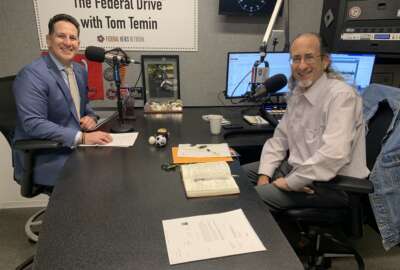The High-5 Monster Under Feds’ Beds
Even the most rational, self-controlled federal and postal workers sometimes have nightmares about their jobs. Senior Correspondent Mike Causey says chief among...
To the extent that federal and postal workers worry about their jobs, the biggest single fear seems to be that Uncle Sam is going to change retirement rules before they are ready, willing or able to bail out. To reduce the annuity they had been counting on by hundreds or even thousands of dollars a year. For life.
Over the past few months, hundreds of long-time feds have contacted us and other media that cover the federal scene with the same question, in many different forms:
Are they going to change retirement rules? When will they do it? Will they allow current employees to retire under the current (more generous) formula? Will they limit the change to future retirees? Will the benefits of long-retired workers be recomputed (and reduced)? And, finally, who the heck are “they”?
Here’s a typical letter:
- “…I have been working for the government for 31 years. I need to put in another three to four years. I had been counting on an annuity based on my highest three-year average salary. Now they drop the change to a high-5 on us. Aren’t federal pensions protected the way the government protects private sector? Where does this proposal, to change from the high-3 to high-5, come from and who makes the decision? Will we be grandfathered in?” — Sleepless (quite literally) in Seattle
Here’s the deal.
Most private sector companies that still offer pensions (less than half) base benefits on the employee’s highest five-year salary average.
The proposal to switch government to the high-5 system has come up each year, for the past 25 to 30 years, on the laundry list of ways the government could save money. (The same list always recommends elimination of the home mortgage interest tax deduction as a way to give Uncle Sam more money.) So far, none of the suggestions has gone anywhere. But this time it is different…
While they disagree (a lot) on details, Congress and the White House have agreed that government spending must be cut. The bipartisan Gang of Six in the Senate is working on a cost-reduction package. It will draw many of its recommendations from the list worked up by the President’s deficit reduction commission which, among other things, proposed a three-year federal pay freeze instead of the two-year freeze okayed by the White House.
In addition, several members of Congress have announced plans to propose benefit changes (including a five-year pay freeze) ranging from the way pay raises are determined to a formula that would reduce future cost-of-living adjustments (COLAs) for federal/military retirees. One would eliminate any civil service retirement benefit for feds hired in the future.
Any change, like going from the high-3 to the high-5 formula, would have to make its way through the legislative system. That means Congress. It COULD be part of a very large package of recommendations that Congress could accept via an up or down vote. That is the way Congress handled the BRAC (Base Realignment and Closure) issue.
Or the high-5 COULD be stand-alone legislation, or a smaller package that would have to go through the committee system, then be approved by the House, the Senate and then the President. That’s who “they” are!
Bottom line: The high-5 proposal has NOT been introduced. So we don’t know when it would be effective – IF introduced and IF passed – nor do we know the details of who would be impacted.
This is like the imagined monster who lived in the closet when you were a kid (mine was an under-the-bed demon who ate toes). It is not there yet but it sure is scary and it bears watching.
Stay tuned!
To reach me: mcausey@federalnewsradio.com
Nearly Useless Factoid
by Suzanne Kubota
Blowing on soup really does make it cool down. Thanks for that, MensHealth!
MORE FROM FEDERAL NEWS RADIO
OPM to enlist recruitment ambassadors
The Office of Personnel Management launches a new portal to help managers improve how they bring new employees into the government. USAJobsrecruit.gov is available for all feds to share best practices, find tools and solve challenges as Federal Service Ambassadors.
NGA: the work isn’t over
Other headlines from this morning’s Federal Newscast include: Contractors must now self-identify, VA warns about delays from going manual, Army’s next surgeon general could break two barriers.
Civilian BRAC gains Hill support
The White House on Wednesday sent to Congress a legislative proposal that would establish an independent commission to sift through more than 12,000 excess federal properties and streamline the process of either selling or demolishing them.
USPS offered digital modernization ideas from overseas
The U.S. Postal Service is in the red but how does it get out? The Government Accountability Office says USPS should look to other countries that have been in similar situations for the answer.
Copyright © 2025 Federal News Network. All rights reserved. This website is not intended for users located within the European Economic Area.





